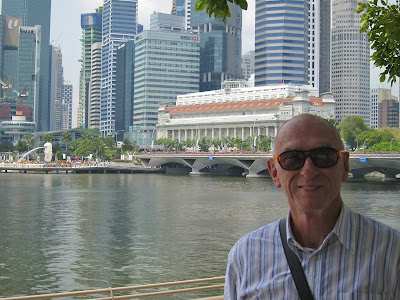Wednesday, June 9, 2010
Monday, April 19, 2010
The "Pathos of the Pasos" on Good Friday 2010
The core events in Semana Santa are the processions of the brotherhoods, known as estación de penitencia (stations of penance), from their home church or chapel to the Cathedral of Seville and back.
A number of people (sometimes barefoot) are dressed in a habit with the distinctive pointed hood and holding long wax candles (only lit by night), and march in silence. These are the nazarenos. A procession can be made up from a few hundred to near 3,000 nazarenos and last anywhere from 4 to 14 hours, depending how far the home church is from the Cathedral.
At the center of each procession are the pasos, an image or set of images set atop a movable float of wood. If a brotherhood has three pasos, the first one is a sculpted scene of the Passion, or an allegorical scene, known as a misterio (mystery); the second is an image of Christ; and the third an image of the suffering Blessed Virgin Mary, known as a dolorosa.
The structure of the paso is richly carved and decorated with fabric, flowers and candles. Many of the structures carrying the image of Christ are gilded, and those carrying the image of the virgin often silver-plated.
A distinctive feature of Semana Santa in Seville is the style of marching of the pasos. A team of men, the costaleros (literally "sack men", for their distinctive - and functional - headdress), supporting the beams upon their shoulders and necks, lift, move and lower the paso. As they are all inside the structure and hidden from the external view by a curtain, the paso seems to move by itself. On the outside an overseer (capataz), guides the team by voice, and/or through a ceremonial hammer el llamador (caller) attached to the paso.
Some processions are silent, with no musical accompaniment, some have a cappella choirs or wind quartets, but many (and especially those historically associated with poorer neighbourhoods) feature a drum and trumpet band behind the image of Christ and a brass band behind the virgin playing religious hymns or marchas from a standard repertoire Those associated with the images of Christ are often funeral in nature, whilst those associated with the Virgin are more celebratory.
Saturday, March 27, 2010
Subscribe to:
Posts (Atom)



